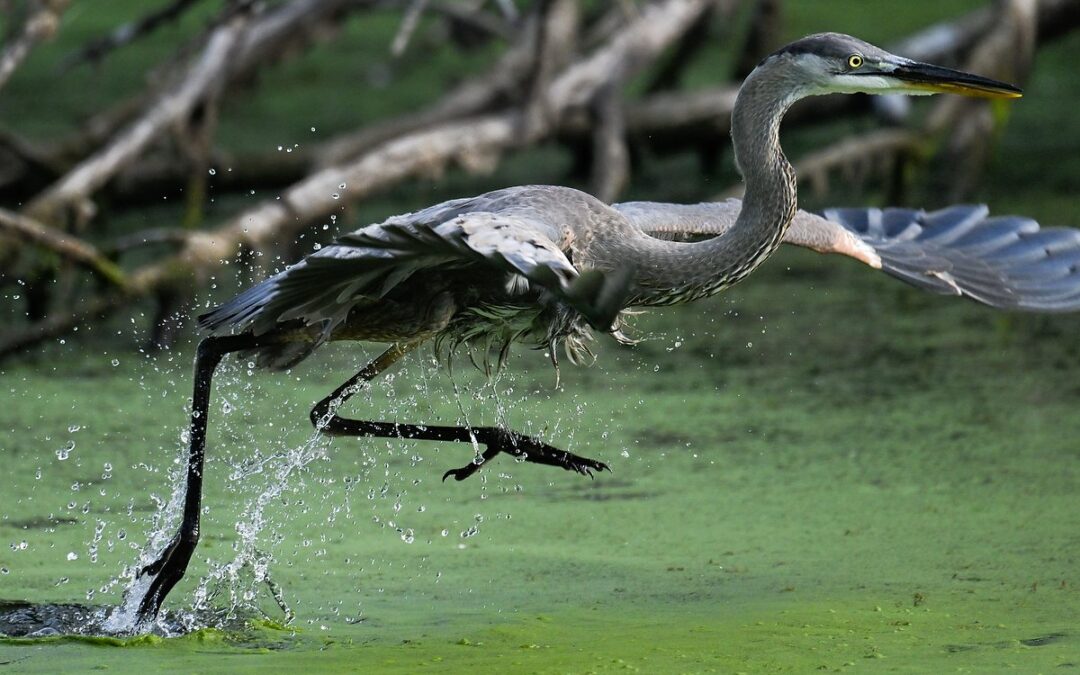If you want to get better at framing while doing action photography, practice with a longer lens. Anyone can shoot loose and crop, and yes, today’s high-resolution cameras make that pretty easy to do. But you lose resolution and the background can be more distracting because the depth of field will be greater. So originally with my 500mm lens, and now with my 800mm, I’m often shooting tighter than I’m comfortable, while trying to stay on moving subjects. Because as they say, practice makes perfect.
That’s just what I was doing this past Tuesday, beginning my day at 6:15am as a friend and I headed out to photograph herons. Using only the 800mm (mostly on a monopod), I shot them flying and fishing, the closer the better. Which means I missed more than a few photos because I was TOO tight. But boy, when I was able to stay with the bird, and get my framing right… wow.
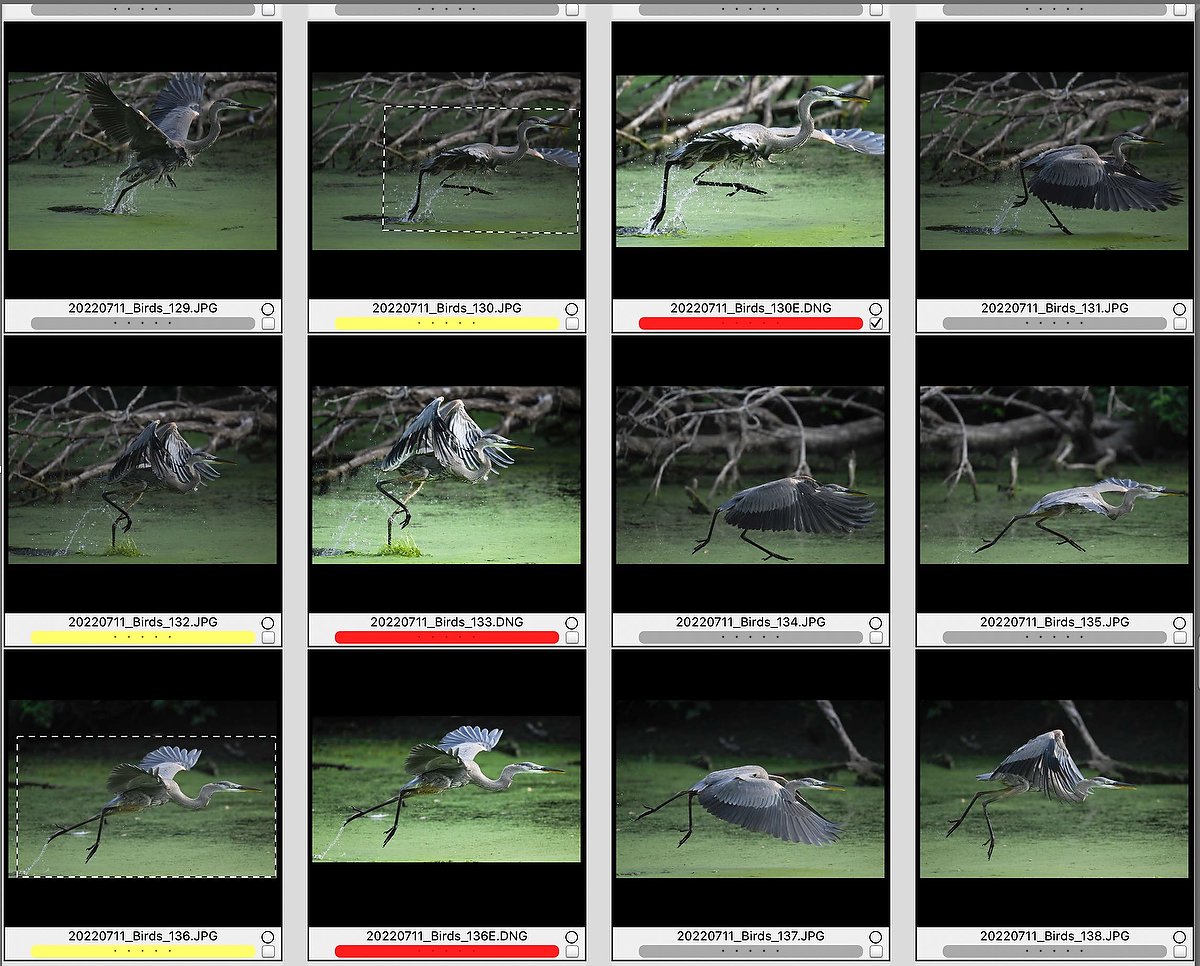
Part of a sixteen-frame sequence I shot of a Great Blue Heron taking off using my 800mm lens.
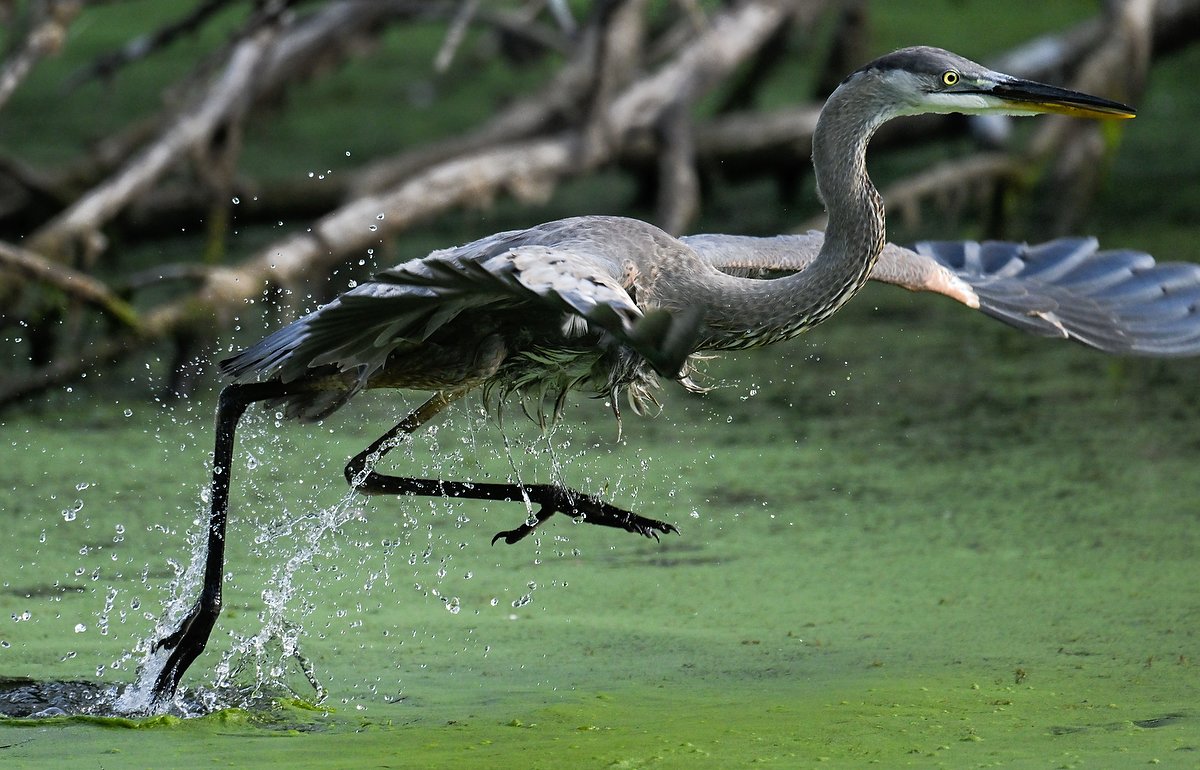
One of my favorite photo from that sequence, after cropping and editing. Even with the crop, the image is still 23-megapixels, more than enough for a large print. And the extreme focal length, paired with a relatively fast aperture, helps hide an otherwise very messy and distracting background. Nikon Z 9, Aperture Priority, Natural Auto white balance, ISO 1250, 1/2000 at f/6.3 in Matrix metering, -1.3 EV, Nikkor Z 800mm f/6.3 VR S lens.
That afternoon I shot the Royals/Tigers baseball game. Not being assigned to it, I could play and take chances, so again used the 800mm. And just like in the morning, I missed some photos. Which is why I don’t normally shoot that lens while covering a game for the Associated Press or Getty – the editor wouldn’t be happy hearing I missed an important moment because I was playing. But once again, when I was able to get the framing right… wow. Tons of resolution (the Nikon Z 9 gives me 45-megapixels) and a background that essentially doesn’t exist, thanks to the very shallow depth of field created by that lens.
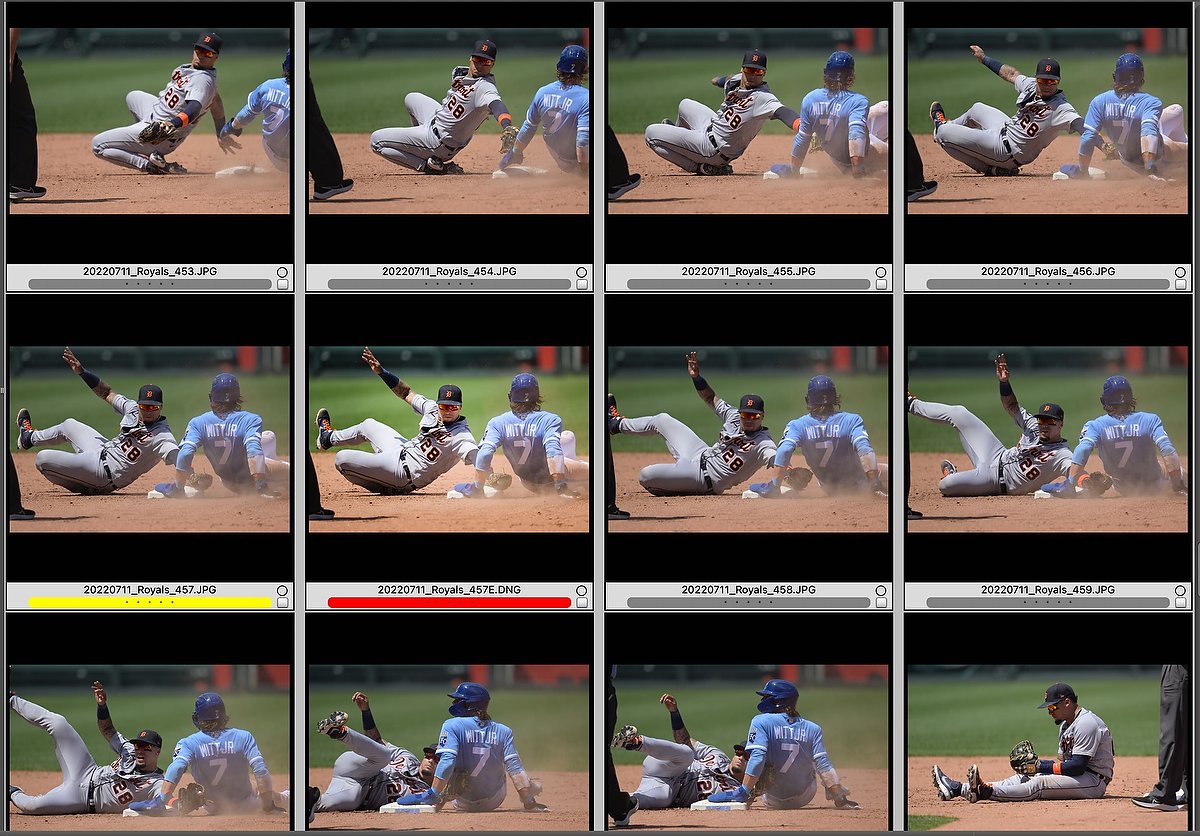
Here’s thirteen frames of a play at second base in the game between the Kansas City Royals and Detroit Tigers with the 800mm.
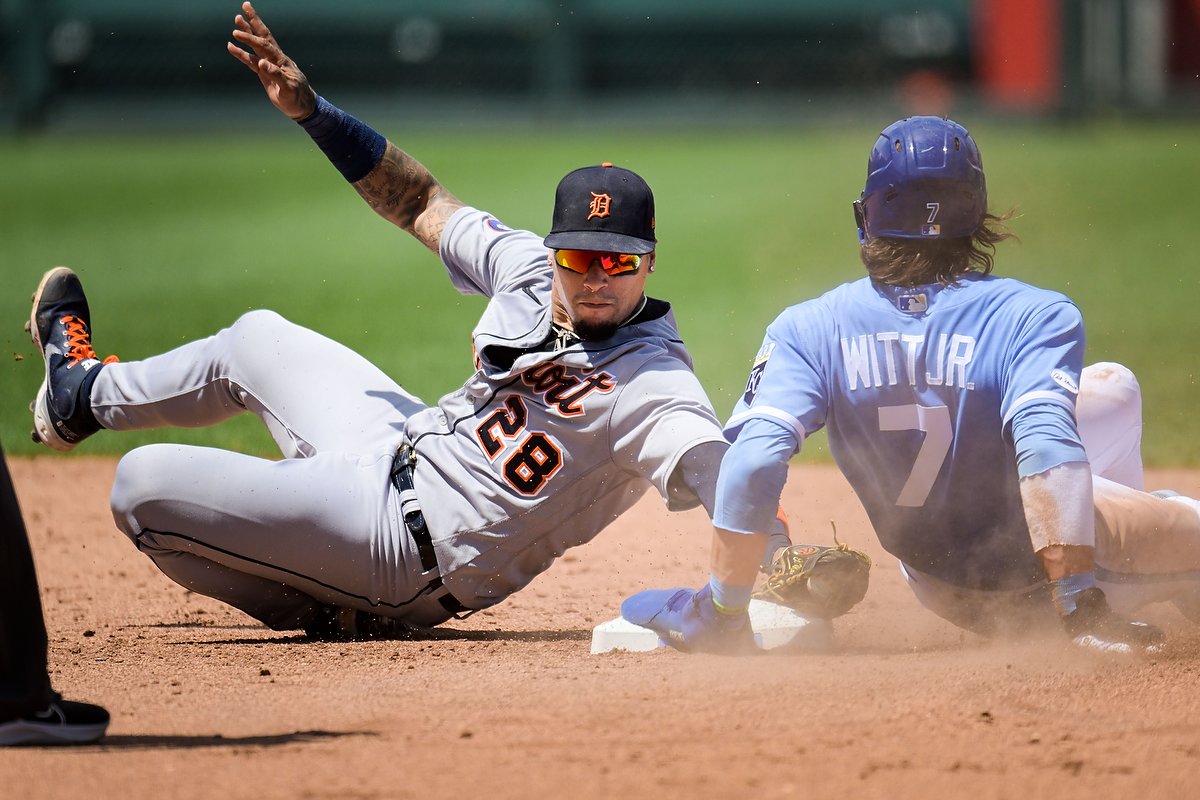
My favorite photo from that sequence, of Bobby Witt Jr. stealing second ahead of the tag by the Detroit Tigers’ Javier Baez. This is the original frame, no cropping, so a full 45-megabpixels worth of image. But then not much room for error, either. Nikon Z 9, Shutter Priority, Natural Auto white balance, ISO 560, 1/3200 at f/6.3 in Matrix metering, -0.3 EV, Nikkor Z 800mm f/6.3 VR S lens.
Why shoot so tight I might miss photos? Because that makes me better with my shorter lenses (500mm and 200-400mm). If I can track and stay with a moving subject pretty well with the 800mm when framed tightly, think how much better I’ll be when shooting looser, with a shorter lens. And that’s precisely my goal. I don’t shoot most sports extremely tight because then I risk missing an big play. But I can’t shoot extremely loose, either, because then I sacrifice too much resolution. Finding that happy medium is the challenge. But regardless, I need to be good at following action and framing it well. Which brings me right back to the 800mm. Sometimes, yes, I need it for the reach – the subject’s simply too far away, or small (like birds). But a lot of the time now, I use it as a tool to help refine my framing skills. My goal is always to keep learning, and more importantly, keep improving.
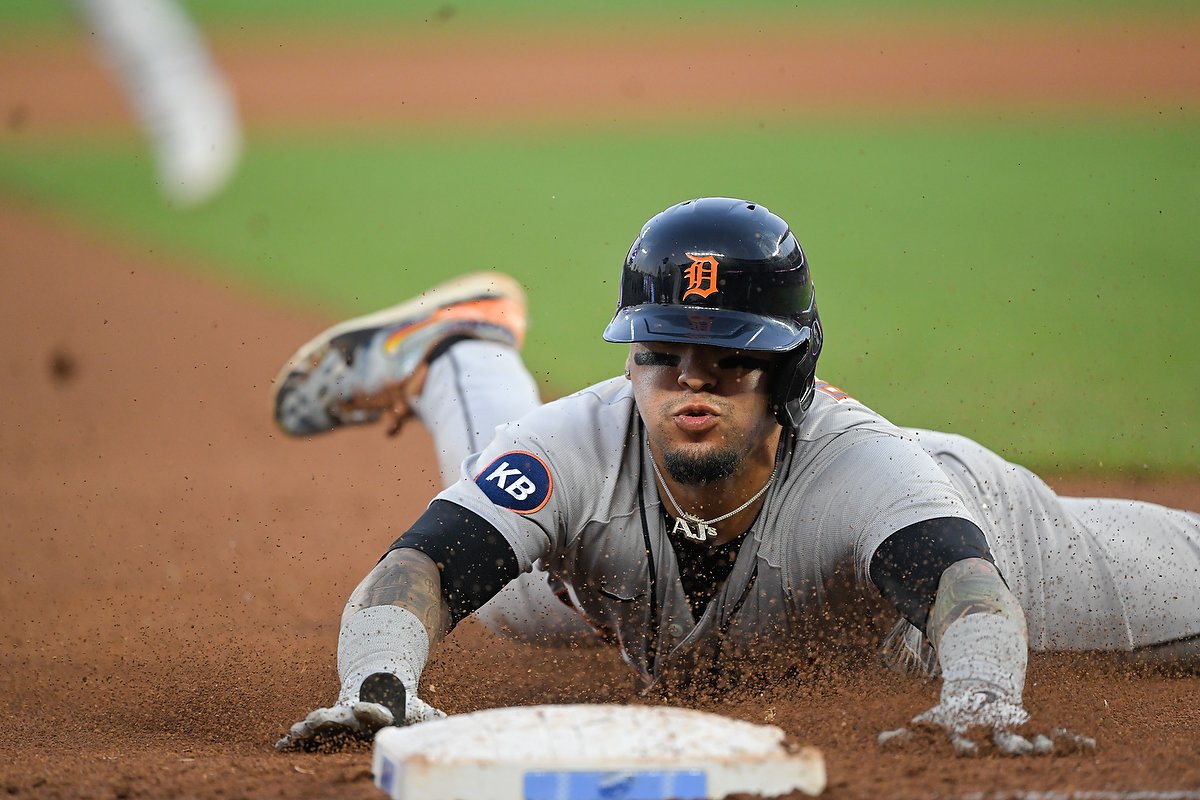
Wedensday night I was covering the game, for the AP, and when the Detroit Tigers’ Javier Baez sprinted from second to third on a sacrifice fly, I stayed on him with the 500mm lens even as he dove for the bag. This is where that practice pays off. While I cropped in a bit tighter for the photo I transmitted, this was the original frame, as shot. Nikon Z 9, Auto white balance, Shutter Priority, ISO 2500, 1/1600 at f/4.
(If you like this story, please share it with your friends and let them know about the links on photography that I post on my business Facebook page. I’m also on Instagram and Twitter, @reedhoffmann. And if you’re curious about the workshops I teach, you can find them here. You can subscribe to this blog, to be notified when new ones are posted, on my home page.)

